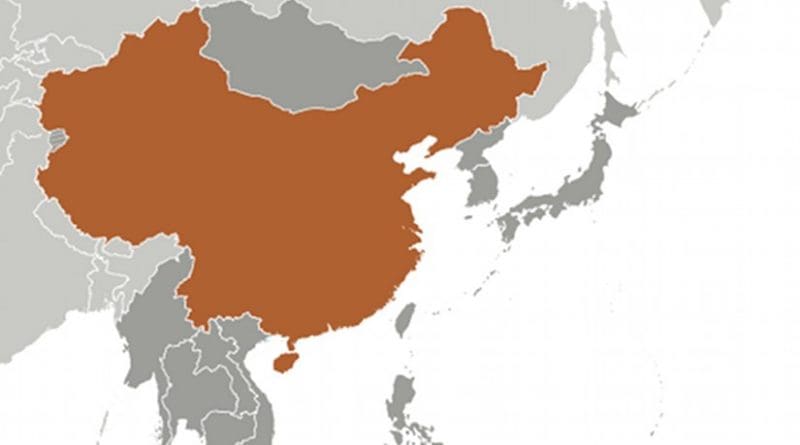IMF’s Tao: Modernizing China, Investing In Soft Infrastructure – Speech
By Zhang Tao, Deputy Managing Director, IMF
(Peking University, Beijing, China) — Good afternoon ladies and gentlemen.
It is my great pleasure to participate in this important event.
Let me start by expressing our gratitude to the National School of Development at Peking University for co-organizing this event. This school has a long tradition of active and constructive debates that have shaped China’s policy agenda. I’m particularly pleased to see so many familiar faces of friends and colleagues.
My colleagues at the IMF and myself are here to introduce our latest publication on China: Modernizing China—investing in soft infrastructure. My colleagues will explain in detail what we mean by investing soft infrastructure in China. But before that, let me briefly explain why this subject is important and relevant in today’s world. I will also explain how our work at the IMF is tied to the subject of investing soft infrastructure in China.
Changes lie ahead
2016 was a year of tectonic shifts—the U.K. vote for Brexit, the change in the U.S. administration, and the sharp rise in longer-term interest rates and the dollar.
The good news is that the Asian economies generally remained resilient in 2016, despite the many changes.
I can tell you that we expect Asia to continue to lead global growth. The region has a lot to be proud of: it is the world’s most dynamic region and accounts for 40 percent of the global economy.
Yet, this is no time for complacency in Asia and for China as well.
The world is changing at an incredibly fast pace. Moreover, China needs to continue to change and rebalance its economy toward sustainable balanced growth.
Build soft infrastructure to manage the changes
A question for all of us is how to keep building on past successes to create a better future in this constantly changing world.
China’s past successes were built in part on reforms that led to strong investment in physical infrastructure, like roads and bridges.
Now China needs to shift to a new generation of reforms designed to help rebalance its economy. One shift is for government to move from directing, owning and investing in physical infrastructure, to one as a facilitator and regulator of private initiative, enterprise, and innovation.
This shift is the subject of our book we will discuss today: we call it a shift from ”hard” investment to investment in “soft” infrastructure.
This new role for government, less direct but no less important, is often not well understood by the public. This is why we think the issues and analysis in our book will help explain what it means, and create a better understanding of the objectives. Our hope is this will make them easier to implement.
What is soft infrastructure?
It is the collection of institutional frameworks that support sustained economic and social progress.
It covers a broad range of policies including fiscal, monetary, financial, state-owned enterprises, local governments, and statistics.
These frameworks are built on a foundation of open markets. They include fiscal policies that facilitate the management of the economy, and ones that avoid the build-up of excessive risks. They include things like a fair tax system, a financial system that helps channel peoples’ savings to productive uses, and corporate governance that protects consumers and workers.
For example:
For state-owned enterprises. China needs to put in place frameworks that impose hard-budget constraints, create a level playing field, minimize waste, improve the allocation of resources, and allow exits.
For local governments. China needs to have an incentive structure that better aligns local governments’ goals with national priorities.
It also needs a tax system that is commensurate with spending obligations, since local governments provide the basic services such as education, health care and social security benefits.
For macroeconomic policy making, there is a need for better regulation and supervision of the financial system and a price-based monetary policy framework. There is also a need to upgrade and invest in the statistical frameworks to facilitate the calibration of macroeconomic policies.
Soft infrastructure, taken together, can help China shift its economy toward consumption, services, and environmentally friendly growth, and manage the challenges of a constantly changing world.
China and the IMF
Let me now take this opportunity to highlight the close partnership between China and the IMF.
China is a very important member of the IMF, and the multilateral system it represents. Last year’s IMF quota and governance reform saw China and three other large emerging markets rise to the top ten shareholders in the IMF. This and the inclusion of the renminbi in the Special Drawing Rights basket were important steps for both China and the IMF.
The IMF is a committed partner with China, providing policy advice, training, and technical assistance.
To give you an example, a few months ago, the China Securities Regulatory Commission and the IMF signed a Memorandum of Understanding to foster capacity building. Last year, a similar agreement was signed between the Ministry of Finance and the IMF.
I should also note that a number of graduates from this esteemed university now work at the IMF. Young talent, like you, with new ideas, agile minds, and so much energy, is exactly what our partnership needs to grow.
Conclusion
As 2017 gets under way, the global outlook is somewhat more positive, but uncertain. This calls for vigilance and resilience. We look forward to a productive event today that sheds some more light on how to manage the change and invest in our future.
Thank you.

